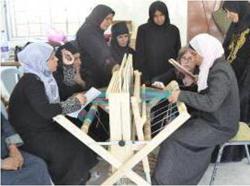Human Resource Development

The IALC has supported education, training, and technology transfer projects that contribute to human resource development. In addition, many of the research projects supported by the IALC have led to lasting collaborations between researchers at IALC-affiliated institutions around the world, which has resulted in on-going information sharing, field visits and hands-on training.
Project Examples
-
Integrated Technology Transfer: Soil Management for Erodible Lands (1998)
South Dakota State University and USDA Agricultural Research Service
Tom Schumacher (Principal Investigator)Dryland management practices must take into consideration the potential for wind, water, and tillage erosion and no-till farming is a proven technology that minimizes these soil degradation processes. A demonstration project was developed to enhance the infrastructure used to transfer region-appropriate soil management technology. A long-term benefit of the demonstration project has been an increase in the linkages formed between no- till farmers, technology transfer agents, and researchers.
-
Use of GIS as a Decision-Making Tool for Rangeland Restoration – A Demonstration Project for the Worldwide Web (2003)
Texas A&M University – Kingsville
Scott E. Henke (Principal Investigator)Exotic species invasions represent a significant threat to biodiversity and arid and semiarid lands of the US and other parts of the world are even more susceptible to the negative impacts of invasive species. Geospatial technologies are powerful tools for collecting, managing, analyzing, modeling, and presenting geographic information. A demonstration project was implemented to educate biologists, landowners, and land managers on how various geospatial technologies (Global Positioning Systems (GPS), Geographic Information Systems (GIS), remote sensing, and precision agriculture) can be integrated to restore and manage native natural resources.
-
Edu-Venture: Demonstrations of Arid Lands Techniques (2001)
The University of Arizona
Lee Clark (Principal Investigator)The Edu-Venture project led to the development of an educational facility where students can come to learn about arid lands ecosystems using a hands-on approach. The constructed Edu-Venture Trail includes the following stations: sundial area, soil and air temperature monitoring system, cactus garden, palm area, desert landscape area, transitional and traditional landscape area, hardening off area, hummingbird and butterfly garden, greenhouse, monolithic dome, herb garden, telescope area, compost area, vegetable garden area, irrigation system, cowboy cooking area, Indian village area and the photovoltaic array. The demonstration area hosted 1600 people in its first year and led to the development of a curriculum guide with 39 lessons in 6 different units.

